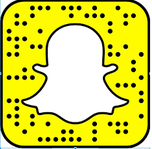|
To see more of Jessica De Gree's blog, go HERE.  While in Europe, I decided to keep Snapchat to stay in contact with family and friends, deleting other social media outlets to concentrate my focus in the now. Snapchat is an app which allows users to send pictures to friends for a certain amount of time. It is used the most among the youth, giving them opportunities to send pictures to friends and share their experiences in life. I particularly like Snapchat because I get to send and receive pictures to my little siblings and close friends every day. However, Snapchat has evolved from an app used to only send personal messages, into an outlet for people to connect with other “snappers” around the world in the form of global stories. While this may seem really great – people get to see other people in other areas of the world – it may be dangerous if people only watch the stories, instead of reading educational articles, to get to know other cultures because they are only getting the viewpoint of the youth, which misrepresents the country or culture as a whole. Even potentially more dangerous, Snapchat has recently allowed companies to post daily stories on the Snapchat story feed, even if each user does not add the company and choose to follow it. With just a finger’s tap on the screen, users can easily access articles, blogs, and posts from these companies. So, what’s wrong with that? Well, by letting users, especially young people who probably do not yet have a holistic view of the world, read these articles, Snapchat and these companies unconsciously shape the minds of the youth. The quick and easy news is not always factual, or even evocative, making the user used to not having to think too much while reading it. In addition, many of the articles falsely advertise the contents, and many still are extremely poorly written. I have been shocked by so many of the articles, and yet, these articles are so easily accessible, it seems so harmless to just click them and scroll through. If these news substitutes were only about harmless, nonpolitical subjects, they would possibly just negatively affect the user by making them accustomed to using little thought. However, not all of these articles are of innocent content. Much of the content of these stories would be considered as immoral by principled people. Yet, perhaps because mainly only youth use Snapchat, parents do not realize and do not know what their children are reading. Snapchat evolved from an app used to communicate personally into a news source which targets the vulnerable youth. In a time of growing political division, or hardship, it is important that our youth equip themselves with the skills necessary for the future. Namely, reading, writing, and discussing using sound logic. But, if our youth becomes accustomed to being spoon-fed poorly written, illogical articles, it may be harder later in life to ask the tough questions and logically make good decisions. One way to combat the new Snapchat news source is to read and write good articles. Through making the real news appealing to the youth, and through encouraging the youth to broaden their news sources, they may be better prepared for the future. If not, if our youth become comfortable in accepting things, they may wake up in reality too late to realize their rights have slipped away.
1 Comment
Article Provided by AmericanFlags.com
A Lesson in History: The American Flag As U.S. citizens, we all are extremely familiar with the American flag. We see it flown outside of businesses and government buildings around the country. During grade school, we recited the “Pledge of Allegiance” with our hands placed dutifully over our hearts. During holidays such as Independence Day, Memorial Day, Veteran’s Day, and Flag Day, Americans will often fly Old Glory to show their patriotism. While it’s an instantly recognizable symbol and you probably even own a flag or two, how much do you know about the history of our flag? When did the first American flag appear? Do you know why the colors red, white, and blue were selected? Can you remember who was credited for the current design of our nation’s flag? The answers to these questions are answered below, as we explore the history of the U.S. flag. Some of the facts you will surely remember from your school days, while other tidbits may surprise you. The Beginning Flags are a big deal for nations. They not only stand as symbols of particular countries, but they solidify the existence of countries. This is especially true during times of war. Originally, when the first pilgrims set sail for America, they brought the English flag with them. However, once it became apparent that the settlement was going to become a country on its own, there were several changes made to the flag, most of which had strong British influences. We’ll start in 1777, when the first official flag was adopted for the colonial forces. After having many different versions of flags, the Continental Congress met on June 14, 1777, to pass what is known as the Flag Act. While this did not contain any specific drawing or illustration of the proposed flag, the Act did state, “Resolved, That the flag of the United States be thirteen stripes, alternate red and white; that the union be thirteen stars, white in a blue field, representing the new Constellation.” As you can imagine, with just those words to describe what the official flag should look like, there were many first interpretations. While the first origins of the first design aren’t exactly known, many historians do believe that New Jersey Congressman Francis Hopkins came up with the first design, while seamstress Betsy Ross sewed it. This first version had thirteen white stars that created a circle in a field of blue, with 13 alternating red and white stripes. This worked for the original 13 colonies; however, as America grew and expanded, stars were added to represent each new state. So, between 1777 and 1960, Congress passed various different acts to change the design and shape of the flag to fit new stars accordingly. Modern Day Today, the flag has 50 white stars in a field of blue to represent the 50 states of the Union, and 13 stripes, seven red and six white, for the original 13 colonies. This design was created by high school student Robert Heft, in 1958, for a class assignment. At the time there were only 48 states, as Alaska and Hawaii had not yet been added; however, Heft included them in his design. While his teacher only gave him a B-, supposedly for lack of originality, Heft’s creation caught the eye of President Eisenhower. The president picked Heft’s flag out of 1,500 submissions, as the two additional stars represented the two upcoming additions, Alaska (1959) and Hawaii (1960.) This flag is the one that is still used in the present day. The Pledge of Allegiance We think it’s important to talk about the Pledge of Allegiance, as it is something that all American kids, from the time they enter kindergarten up until they complete high school, have to recite each morning. As with the flag, it is something that is so engrained in our culture, we hardly take the time to learn about its history. In 1892, socialist minister Francis Bellany wrote the Pledge of Allegiance, and it was then published in “The Youth’s Companion” on September 8th of that same year. The original pledge was as follows: “I pledge allegiance to my Flag and the Republic for which it stands, one nation, indivisible, with liberty and justice for all.” Bellany wrote the pledge with the hope that citizens throughout the country would use it. He got his wish when, on October 12, 1892, during the very first nationally recognized Columbus Day (something Bellany also advocated for), grade school kids everywhere recited the “Pledge of Allegiance.” Later, in 1923, the wording was slightly altered to include “of the United States of America” making the official pledge read: “I pledge allegiance to the Flag of the United States of America and to the Republic for which it stands, one nation, indivisible, with liberty and justice for all.” The last revision took place in 1954 when President Eisenhower encouraged Congress to add the words “under God,” which was in response to Communist threats of that time. While Bellamy was a minister, his daughter objected to this change. However, it was added, and the final version, the one which is recited today reads: “I pledge allegiance to the Flag of the United States of America, and to the Republic for which it stands, one nation under God, indivisible, with liberty and justice for all.” With the original pledge, Bellamy wanted those students to recite it while facing the flag, giving a military salute – right hand lifted, palm face down. When the words “to my Flag” the right hand was to remain extended, but with the palm turned upward (instead of downward), where it was to remain until the pledge was finished. However, as we know, today the procedure is a little different. In fact, Section 4 of the Flag Code states: “The Pledge of Allegiance should be rendered by standing at attention facing the flag with the right hand over the heart. When not in uniform, men should remove any non-religious headdress with their right hand and hold it at the left shoulder, the hand being over the heart. Persons in uniform should remain silent, face the flag, and render the military salute." |
John De GreeJohn De Gree writes the current events with a look at the history of each topic. Articles are written for the young person, aged 10-18, and Mr. De Gree carefully writes so that all readers can understand the event. The perspective the current events are written in is Judeo-Christian. Receive Articles and Coupons in Your EmailSign Up Now
For Email Marketing you can trust. Archives
June 2024
Categories
All
|
|
SUPPORT
|
RESOURCES
|
|



 RSS Feed
RSS Feed



